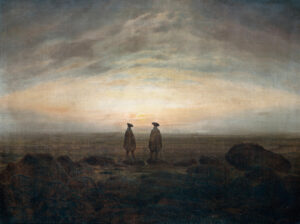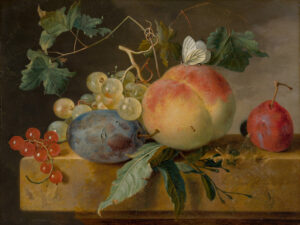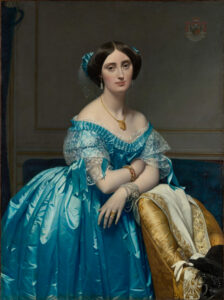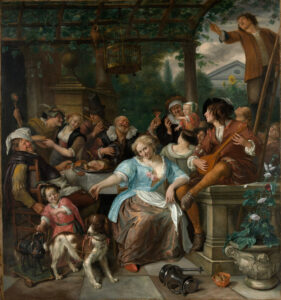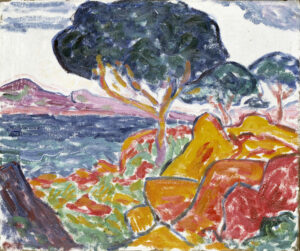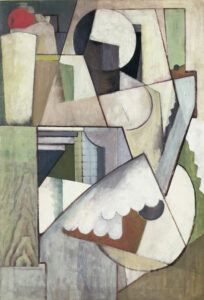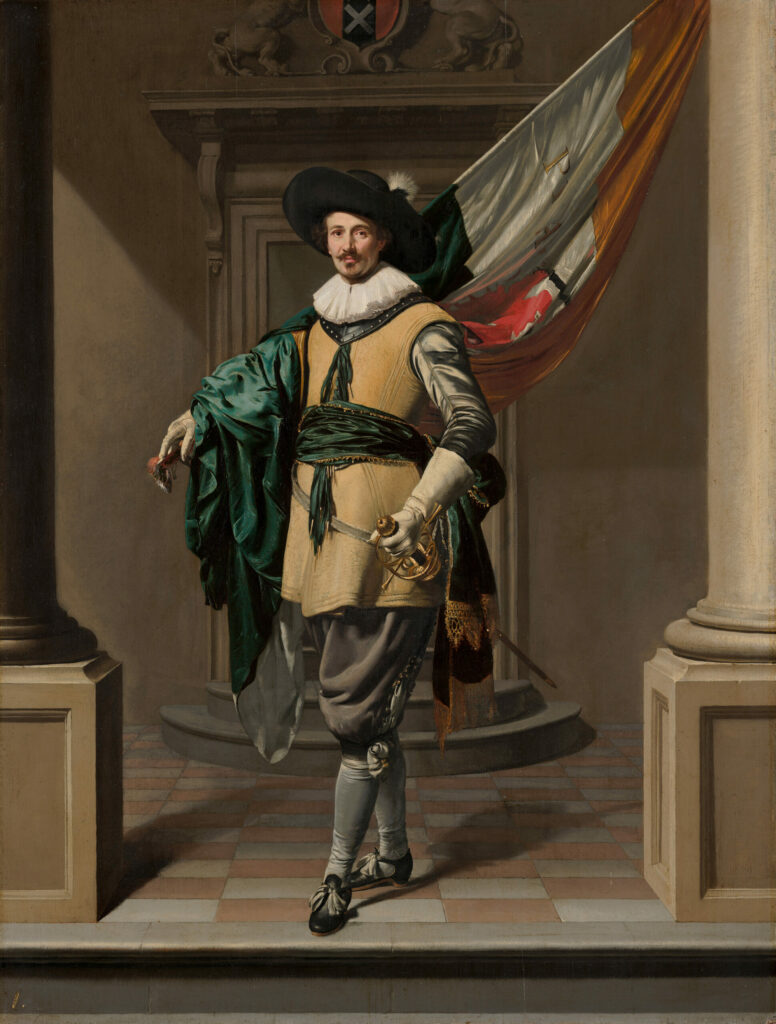
Amsterdam, 1626. Loef Vredericx, a goldsmith by trade, proudly dons the uniform of ensign in the civic militia. Thomas de Keyser, the city’s most sought-after portraitist, immortalizes this moment of civic glory. A man on the rise poses, flag in hand.
A meticulous state portrait
Vredericx stands in an elegant posture, left leg forward. He wears the regulation uniform of the shooting guild: golden-yellow doublet, puffed grey breeches, and light-colored stockings. A green sash accentuates his waist. A white ruff frames his face. The gilded rapier hangs at his left side. Keyser attends to every detail: the satin sheen of the flag, the Dutch lion, and the inscription “Pro Patria.” The emerald-green drapery of the flag cascading over his arm demonstrates the painter’s technical virtuosity. The classical architecture lends nobility and prestige to the sitter.
The civic militia, republican pride
In the young Dutch Republic, civic militias ensured the defense of cities. Being elected ensign was a considerable honor for an enriched craftsman like Vredericx. These shooting guilds combined military function with influential social networks. Commissioning one’s portrait in uniform publicly proclaimed one’s success.
Keyser, the artist and his sitter
Thomas de Keyser (1596-1667) dominated Amsterdam’s portrait scene in the 1620s-1630s. Son of an architect, he mastered perspective and architectural settings perfectly. His style combined elegance, descriptive precision, and restrained dignity. He captured the psychology of his sitters while celebrating their social status.
💭 Observe this direct, confident gaze. How does a mere goldsmith project here the image of a defender of the fatherland? This portrait questions the construction of social identities in a booming mercantile society.
About this work
- Portrait of Loef Vredericx as Ensign, by Thomas de Keyser, 1626
- Oil on panel, 92.5 × 69 cm
- Mauritshuis, The Hague
- https://www.mauritshuis.nl/en/our-collection/artworks/806-portrait-of-loef-vredericx-1590-1668-as-an-ensign

